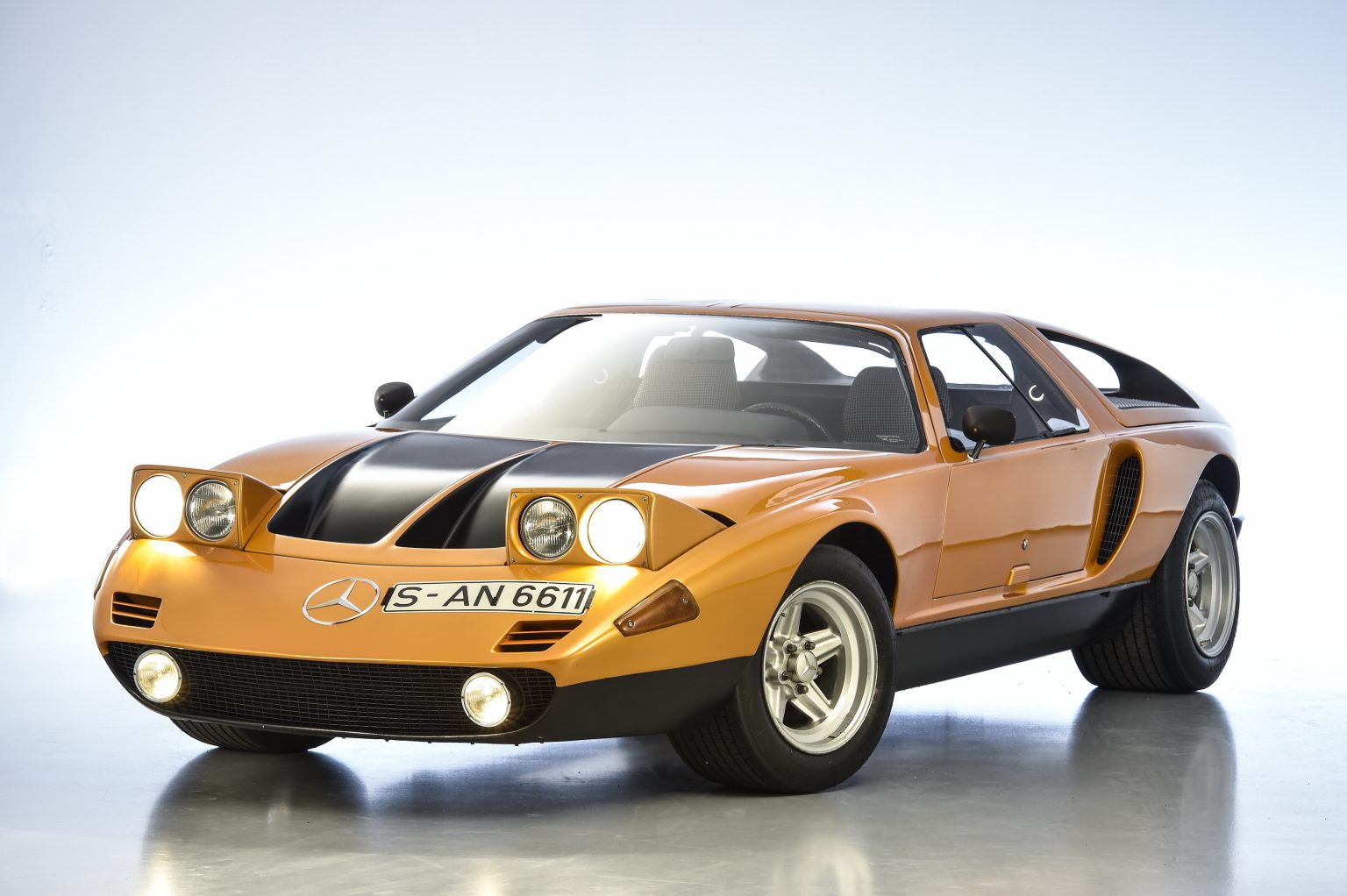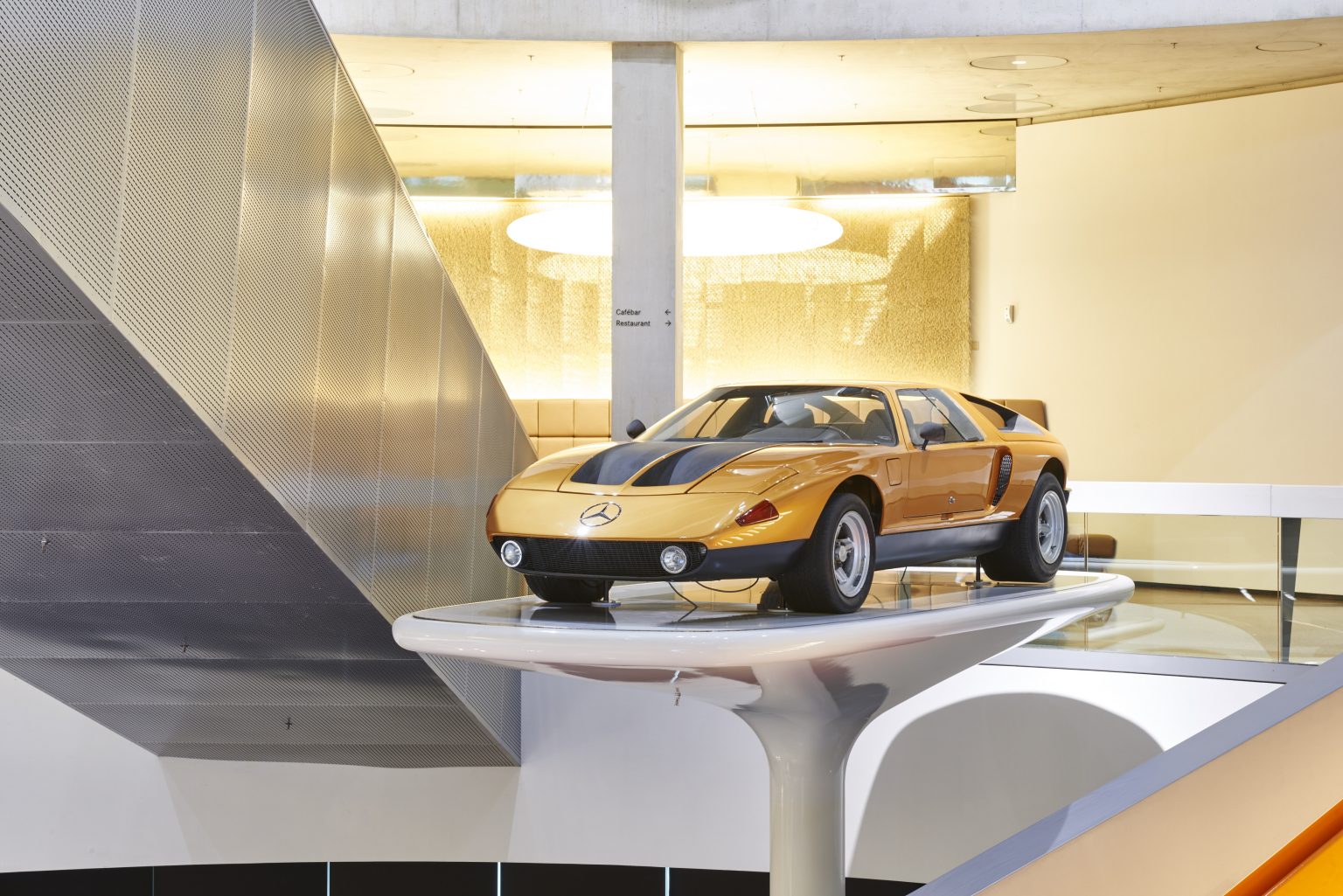
50 years ago Mercedes-Benz developed the C 111-II and the C 111 predecessor as experimental vehicles. The first in 1969 featured a Wankel rotary engine, but it’s the second with the 4 rotor engine that was the better developed car.
In less than a year Mercedes had turned the first C 111 into a practical sports tourer. Good visibility, luggage space, quiet, fast. All the right ingredients, oh, and it was stunning too.
Bruno Sacco and Josef Gallitzendörfer headed up the design department, they started work on the second generation in summer 1969. Compared to its predecessor, they improved visibility whilst still retaining gull wing doors. The vehicle’s aerodynamics were also streamlined. They managed to improve the aerodynamics by 8 percent too.
The C 111-II was premiered at the Geneval Motor Show in March 1970. Mercedes had planned to build five of these but brought two along. In an unusual move for protoypes, or concepts, these worked and drove. Giving passenger rides around the Circuit de Monthoux near Geneva.
Mercedes built a few different C 111s over the decade. There was a plastic floor variant of the C 111-II, the record breaking Diesel C 111-IID, C 111-III & IV. The last of these appearing in 1979.
This was the last of Mercedes foray into Wankel rotary engine power. 50 years on and they haven’t attempted it since and they are probably never will again.





